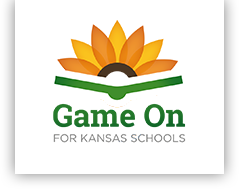We highly recommend reading this report. It’s main points are 1. Eligibility for free or reduced price meals based on family income is a highly effective predictor of student achievement in school. The low income population in Kansas has been growing faster than the national average.
2. Kansas has directed significant funding to at-risk programs, including all day kindergarten, but overall statespending has remained below the national average.
3. Kansas relies more heavily on state funding for at-risk programs and less on local funding than most states. As state at-risk funding increased, spending on instructional purposes has increased.
4. Kansas has significantly increased the number of low income students meeting higher benchmarks, although an achievement gap still exists.
5. Kansas outperforms most states on national reading and math tests and other indicators, even though Kansas per pupil spending is below the national average and its percentage of low income students is just below the national average.
6. Kansas also does better than similar states on college preparation indicators, including student groups with historically lower performance.
7. Kansas public schools have higher performance on national reading and math assessment for low income students than both public and private schools nationally.
8. In recent years, Kansas per pupil funding has fallen behind inflation and other states. At the same time, there are “warning signs” that Kansas academic outcomes are slipping. Funding all-day kindergarten would help mitigate both trends. http://www.kasb.org/assets/
2. Kansas has directed significant funding to at-risk programs, including all day kindergarten, but overall statespending has remained below the national average.
3. Kansas relies more heavily on state funding for at-risk programs and less on local funding than most states. As state at-risk funding increased, spending on instructional purposes has increased.
4. Kansas has significantly increased the number of low income students meeting higher benchmarks, although an achievement gap still exists.
5. Kansas outperforms most states on national reading and math tests and other indicators, even though Kansas per pupil spending is below the national average and its percentage of low income students is just below the national average.
6. Kansas also does better than similar states on college preparation indicators, including student groups with historically lower performance.
7. Kansas public schools have higher performance on national reading and math assessment for low income students than both public and private schools nationally.
8. In recent years, Kansas per pupil funding has fallen behind inflation and other states. At the same time, there are “warning signs” that Kansas academic outcomes are slipping. Funding all-day kindergarten would help mitigate both trends. http://www.kasb.org/assets/
